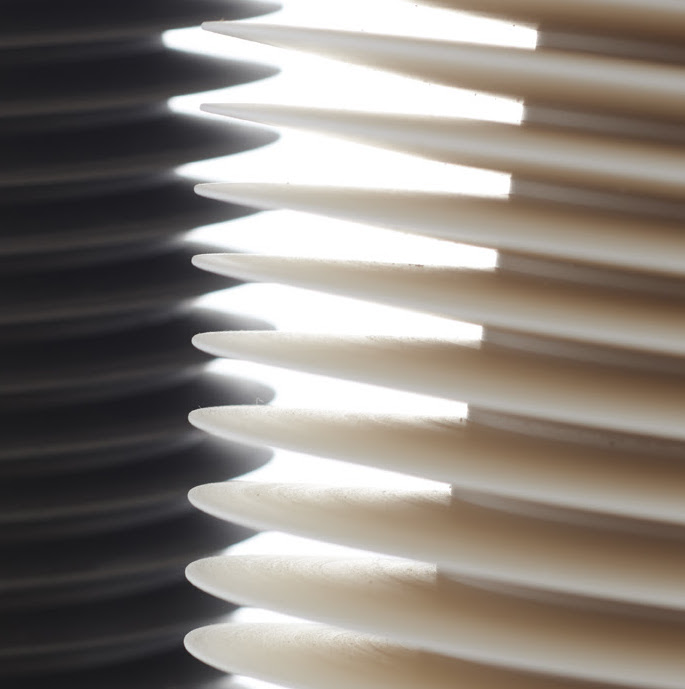Boxes in art have a long history. They are inspired by the cabinets of curiosities (also known as Kunstkabinett, Kunstkammer, Wunderkammer, Cabinets of Wonder, and wonder-rooms). The rooms arrived first around 1590 and the cabinets arrived later to add connoisseurship to the homes of the noble and wealthy. The collections demonstrated the owner’s flair with a subject or point of view, whether that be inventive, theatrical, exotic or scholarly. They flattered their owner’s discernment, knowledge or creativity.

In modern art they have been used and abused extensively. Joseph Cornell is one of the masters of this form of presentation. Its purposes have become manifold; putting a picture frame around a 3-D work, extending the language of assemblage, creating a mood of preciousness or rarity, or isolating the art from its surroundings in the artist’s own miniature gallery. Boxing something, even if it is ordinary, seems to add gravitas and it also, being frontal, can enable the art to occupy the most important art real estate: the wall.

Joseph Cornell, Soap Bubble Set, 1949 – 50, Box construction 14 3/4 x 19 3/4 x 4 1/4 inches (37.5 x 50.2 x 10.8 cm) Smithsonian American Art Museum, Museum purchase made possible by the American Art Forum, 1999.91 Photograph by Gene Young © The Joseph and Robert Cornell Memorial Foundation/Licensed by VAGA, New York, New York. Click to see a larger image.
It can be an essential component to the art or simply window dressing. It is often used to dress up mutton as lamb, to make something more art-like. Some, like Josiah McElheny, use this format brilliantly with mirror boxes that endlessly replicate his elegant glass vessels.

Josiah McElheny, Modernity circa 1962, Mirrored and Reflected Infinitely, 2004. Click to see a larger image.
When I saw Nicholas Lees’ contained vessels from the group exhibition Taste at Artmonte-Carlo (Monaco, April 29 – May 1, 2016) a loud “yes!” sounded in my head. His boxed ceramics solved a problem with his art that has been lingering in my mind of some time.

Boxed sculptures by Nicholas Lees.
When I saw his work in a gallery I was underwhelmed. Something was missing. I blame Sylvain Deleu. Once one has experienced Deleu’s amazing photographs of Lees work, bringing the kinetic line in his forms into such a state of rapture, choreographing the shadows and conjuring illusions, the object minus the light can disappoint in the flesh.

Sculptures by Nicholas Lees.
The light box makes all the difference. Some pots require electricity. For instance the American master Rudolf Staffel’s 20th century “light gatherers” often looked dead when it was unlit. Lees’ work can be handsome without lighting but its difficult for them to soar. The precise filibration of Lees’ multi-winged vessels in his light box come to life as never before and it will be a pleasure seeing this aspect of his art grow in scale and ambition.
In his mission statement Lees writes, “I don’t care whether someone thinks I’m a modernist or postmodernist artist or whatever. I am intrigued in exploring the boundaries between shadows and light, in optical illusion and how to manifest these qualities in clay.” The illuminated boxes have sealed the deal and his elegant drawings broaden his voice. Given that he is a London artist I am sure he will have to endure accusations of “doing a de Waal” but those who try to make this point do not understand the work of either artist. Bravo.
Garth Clark is the Chief Editor of cfile.daily.
Do you love or loathe these works of contemporary ceramic art? Let us know in the comments.


Nailed it!
Good Morning CFile and Garth in particular. I read this article with great pleasure and thought you should know that Nick’s works are now on show at the Galerie du Don up until the 23rd June. After that we’ll be holding them available for clients until early September.
This is his first show in France, this time without the boxes, so something to look forward to in the future.
Very best wishes
Nigel
Yes, I agree without the light is not a same piece.
I am having difficulty making people,- who wants to display my work – understand the piece. It is essential to show all the possibilities. If, some one want to fully appreciate my piece, need to see it from many different angles and function.
Would like to know your opinion.